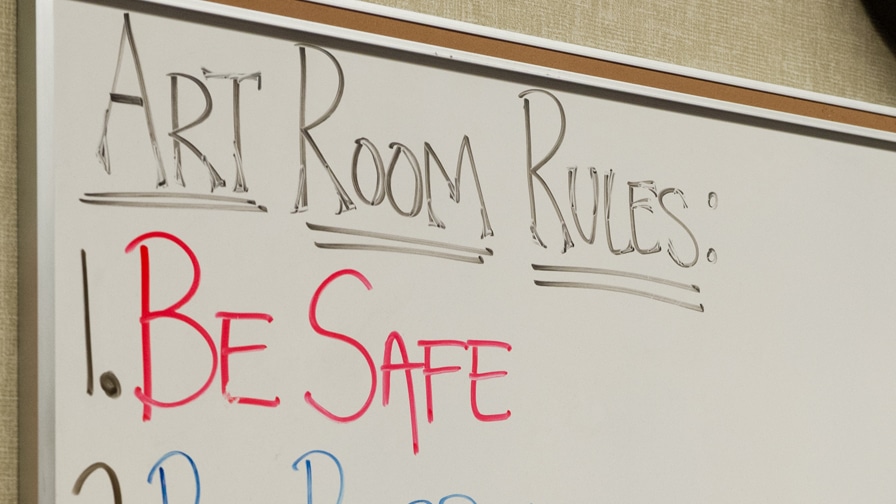
Special area teachers may come up with their area rules on their own, use or adapt classroom rules, or use schoolwide rules. No matter where your special area rules come from, the key point is having them in place—and helping students feel invested by relating the rules to their own personal experiences and learning goals for the school year.
I begin each music class the same way. Students enter the room, move into a circle, and sing a welcome song. Then I give the “sit down” signal followed by the “quiet attention” signal, which students learn and practice at the beginning of the year.
Next we go over the music message, which often includes some music room rules. Here’s an example of a message that connects our rules “Do our best” and “Support each other” to what students are doing in music at the moment:
Dear Music Performers,
This week we practice for our shows. We have to do our best every minute. We need to support each other. Have you memorized all the words to the songs yet? How can you help your classmates learn their words?
Your Music Teacher,
Mrs. Saari
I might say, “What does it mean to do your best?” and “What does it mean to support each other?” If needed, I prompt further by asking, “If you don’t know your words yet, how can your friends help you?” A student might answer, “I ride the same bus as Doreen. We can go over the words on the way to school.” This way of engaging students in thinking for themselves about how they can follow the rules doesn’t take long but has deep impact. To read more about Susan Jenkins Saari’s classroom rules: Music Class Rules
Ownership! I try to help students feel like the computer lab is THEIR space, their classroom, by assigning them a specific computer to use each week in computer lab. I have students talk about and model how they will sit at their computer, put on their headphones, care for their mouse, type on their keyboard, and move around their lab. Then we discuss how to take care of their space—making sure things are put away and used properly. That feeling of ownership is very valuable for children and is definitely an influence on their investment in the rules of this space.
I had a conversation with our school librarian about how she invests students in the rules. She said that students similarly “own” a part of the library—each student is assigned their own 3-foot shelf area that they check on while visiting the library to make sure it’s in good shape. This helps students invest in the care of books while helping to implement the library rules.
At the end of each PE class, students sit for our closing circle. It’s a time for us to rest and highlight our work together. Many times we reflect on how well we followed the rules. After a badminton lesson I may say, “We used rackets today and many different kinds of birdies. How did we show that we followed our rule of taking care of our space and equipment?” One student may say, “I saw people making sure that they were spread out in self-space before they swung their racket.” Another might say, “I noticed that people put their rackets back on the stage carefully so they didn’t break.”
Taking time to have purposeful discussions about rule following is an essential step in keeping students on track and honoring their best efforts. This is particularly important in a special area because most teachers only see students once or twice a week. Keeping the rules “alive” and weaving them into daily conversations proactively guides students toward positive behavior and empowers them to take ownership of their decision-making.
These are just a few examples that illustrate how special area teachers can invest students in the rules. What is one way that you’ve helped students invest in the rules in your special area? Please leave a comment (or question) below.